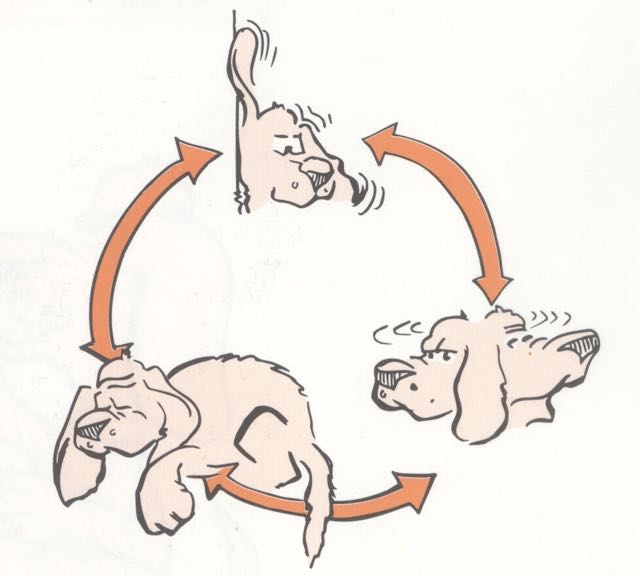Live Without Eczema
The Handbook for Younger Children and their Parents
Christopher Bridgett,
Consultant Psychiatrist, London, UK
Peter Norén,
Consultant Dermatologist, Uppsala, Sweden

This handbook comes in three parts, to be used in three stages:

The first stage usually involves a few days of homework, and the second stage four weeks of homework.
A review may be arranged after the first week of the second stage. Usually at the end of the four weeks homework there is a review to plan follow-up treatment. Further follow-up reviews may be arranged later in stage 3, at six weeks and six months after starting.
There are links to related articles at the end of each part of this handbook.
💡Please bookmark this handbook to your home screen for frequent easy reference!
Part 1 - Introduction and Assessment
1.1 A Combined Approach
This approach to the treatment of atopic skin disease is complementary rather than alternative to conventional treatment. Existing treatment principles are added to, creating a programme that is very effective.
An important aspect of the programme is behaviour modification to eliminate the damage caused to skin by scratching. Also emphasised is the relevance of attitude and circumstance.
Chronic eczema causes months and years of misery. Let’s replace all that with only the days of inconvenience needed for the effective treatment of acute relapses.

1.2 Atopy
Having ‘atopy’ means being born prone to develop eczema, hay fever and asthma. Hay fever and asthma are allergic conditions, like the rhinitis that is caused in summer by a high pollen count.
Eczema is much more to do with dry skin.

Dry skin tends to be itchy: this leads to scratching...

1.3 Scratching
Even normal skin when scratched will eventually look like chronic eczema under a microscope.


1.4 The Vicious Circle
With dryness, itching and scratching a vicious circle is established:


1.5 Breaking the Vicious Circle
The vicious circle of chronic eczema has three levels

Conventional treatment provides emollients for Level 1 and topical steroids for Level 2... but neither are sufficient for Level 3!
Level 3 needs its own special treatment.
Chronic eczema only heals with all three levels of treatment, as described in Part 2.
1.6 Some general points
Food

For most children with eczema, what is eaten is not important. It is true that active eczema can worsen with certain foods but this is not allergy - it is a non-specific toxicity. Once the skin has healed the food can often be eaten again without any problem.
Thus it has been known for a long time that oranges, lemons and tomatoes can give a toxic reaction when eaten. This phenomenon usually disappears with age. Otherwise, it is particularly associated with existing eczema, or recently healed skin - in these phases the skin is relatively unstable.
Infections
Infections such as sore throats can sometimes worsen eczema in a non-specific way.
Clothing
Cotton is always to be preferred to wool and synthetic clothing. The latter can give rise to mechanical irritation and hence itch, on atopic skin.
1.7 What about scratching?
a) Scratching here means all touching that moves the surface of the skin.

Scratching is the fastest and most effective way of getting relief from itch, but with atopic eczema the result is disastrous.
b) Scratching begins as a natural conscious response to itch. It is noticed to begin with, but as with any behaviour that is repeated enough, it can soon become an unconscious habit. Awareness is lost. What we are used to, we do not notice.

c) Habitual scratching gets linked to and triggered by not only itch but also circumstances, activities, and even moods. It generalises.
d) Such situations include when undressing, after a shower or a bath, after topical treatment, watching television, and going to bed.
e) Scratching is sometimes used, consciously or unconsciously, as a form of non-verbal communication - especially within the family.

f) However, children can easily learn how to change their behaviour...

d) Before a habit can be changed awareness is necessary...


A few days therefore are needed now to be spent identifying all situations that are associated with scratching. These need to be recorded on the first chart below and this needs to be discussed in Part 2 of the programme.
NB: No change in behaviour is to be attempted during this initial homework: focus only on becoming aware of what is happening!
1.8 More homework before Part 2.
Two more lists will be useful to have.
Make a list on the second chart below of all triggers of eczema flare-ups you can think of. This list can be added to later, after discussion with others, and as time passes.
And make a list on the third chart below of all diverting and distracting activities that the child enjoys, especially those that involve stillness, and occupy the hands!
Please bring these three completed charts to the next appointment.
Click here for your Three Assessment Charts
Please Note: A few days homework, as described above, needs to be completed now before starting Part 2 of the programme.
Click here for Assessment Tips
💡Bookmark to your home screen💡
![]()
